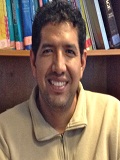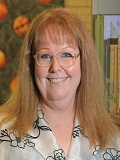|
Jody Cripps, Towson University, Maryland, USA
Mayra Daniel, Northern Illinois University, Dekalb, Illinois
Mario E. López-Gopar, Universidad Autónoma Benito Juárez de Oaxaca
Kristin Snoddon, Ryerson University, Toronto, Canada
Shelley Taylor, Western University, London, Ontario, Canada
THE “E” IN TESOL: IS IT THE ELEPHANT IN THE ROOM?
Mayra Daniel’s talk focused on the current linguistic and
cultural landscape of schools around the world. In this landscape, it is
not difficult to see the influence of TESOL on teachers’ pedagogy. As
Daniel suggested, the “E” in TESOL is like the elephant in the room that
no one wants to acknowledge. However, this “E” serves to raise
awareness of bilingual students’ right to interact in two or more
languages and cultures (Collins & Blot, 2003; TESOL Standards,
2001).
Progressive educators believe that schooling has changed for
the better because multilingualism has hit the schoolhouse. Today,
students translanguage with their siblings at home and with their
classmates and teachers at school (García, Bartlett, & Kleifgen,
2007). In so doing, these students realize powerful multilingual
multicultural identities.
The “E” in TESOL stands for a philosophy of teaching and
learning that extends from kindergarten to tertiary education. For
TESOL, the “E” means to educate the whole person. In teacher education
programs, the “E” is the vehicle to eliminate discrimination. For
teachers, the “E” is the cheerleader and role model. The above three
conceptions of the “E” means challenging students to nurture their
multicultural identities. Educators with such an “E” in mind uphold
TESOL standards while developing curriculum and fair assessment;
advocate for learners and their families; begin with students’ funds of
knowledge (González, Moll, & Amanti, 2005); rejoice in the
multicultural identities of their students (Gollnick & Chinn,
2009; Pang, 2005); and plan culturally appropriate content and language
instruction (Chamot & O’Malley, 1994).
As described by Daniel, the “E” is vibrant in Mr. H.’s middle
school mathematics classroom. Mr. H. pushes, prods, tells stories, and
exemplifies for his learners what they can accomplish. Working with Ms.
L., the family liaison, Mr. H and his colleagues expect only success
from their students. What a letter this “E” is!
REFERENCES
Chamot, A. U., & O’Malley, J. M. (1994). The
CALLA handbook: Implementing the cognitive academic language learning
approach. Reading, PA: Addison-Wesley.
Collins, J., & Blot, R. (2003). Literacy and
literacies: Texts, power, and identity. Cambridge, England:
Cambridge University Press.
García, O., Bartlett, L. & Kleifgen, J. A. (2007). From
biliteracy to pluriliteracies. In P. Auer & L. Wei (Eds.), Handbook of applied linguistics. Vol. 5:
Multilingualism (pp. 207-228). Berlin, Germany: Mouton de
Gruyter.
Gollnick, D.M. & Chinn, P.C. (2009). Multicultural education in a pluralistic society.
8th ed. Boston, MA: Allyn &
Bacon.
González, N., Moll, L., & Amanti, C. (Eds.) (2005). Funds of knowledge for teaching in Latino households.
Mahwah, NJ: Lawrence Erlbaum Associates.
Pang, V. O. (2005). Multicultural education: A
caring-centered, reflective approach. Boston, MA: McGraw-Hill.
Teachers of English to Speakers of Other Languages. (2001). TESOL/NCATE Standards for P-12 Teacher Education
Programs. Retrieved fromhttp://www.tesol.org/s_tesol/seccss.asp?CID=219&DID=1689.
++++++++++
MEXICAN LANGUAGE POLITICS AND ETHNOGRAPHIC PRAXIS
 Mario E. López-Gopar also presented on behalf of his colleagues
Angeles Clemente and William Sughrua. As described by López-Gopar,
Mexico is a culturally and linguistically diverse society (Terborg,
García Landa, & Moore, 2007). In this society, language
practices are characterized by the intersection of Spanish, numerous
Indigenous languages, and English (Clemente & Higgins, 2008;
López-Gopar, 2009). As a result, English language teachers and teacher
educators may preserve the status quo. Here, Spanish is the de
facto official language of Mexico, and English is the language
of success. Mario E. López-Gopar also presented on behalf of his colleagues
Angeles Clemente and William Sughrua. As described by López-Gopar,
Mexico is a culturally and linguistically diverse society (Terborg,
García Landa, & Moore, 2007). In this society, language
practices are characterized by the intersection of Spanish, numerous
Indigenous languages, and English (Clemente & Higgins, 2008;
López-Gopar, 2009). As a result, English language teachers and teacher
educators may preserve the status quo. Here, Spanish is the de
facto official language of Mexico, and English is the language
of success.
Alternately, educators may resist these hegemonic language
ideologies. These educators work toward the development of a society
where all languages are valued and respected. Doing so leads to a
critical analysis and reframing of the “E” in TESOL in Mexico.
López-Gopar, Clemente, and Sughrua’s paper presented an
overview of language politics (Labrie, 2004) in Mexico. These language
politics include English and its connections to the historical
relationship between Mexico and the United States. The authors also
discussed the current English-as-the-language-of-success discourse.
Last, the authors discussed ethnographic praxis-driven (Freire, 1970;
Higgins & Coen, 2000; Pennycook, 2001, 2010; Pierce, 1989)
research projects. In this research, English language researchers and
student teachers confront English language politics. These researchers
and teachers also reinvent critical pedagogies with children in schools
in Oaxaca, Mexico.
Constant analysis of the research and teaching praxis of the
English language is needed. Such analysis promotes multi(trans)lingual,
intercultural, and multimodal language practices. It also works toward
more egalitarian societies in Mexico and elsewhere.
REFERENCES
Clemente, A., & Higgins, M. (2008). Performing
English with a postcolonial accent: Ethnographic narratives from
Mexico. London, England: The Tufnell Press.
Freire, P. (1970). Pedagogy of the oppressed. New York, NY: Continuum.
Higgins, M., & Coen, T. (2000). Streets,
bedrooms and patios: The ordinariness of diversity in urban
Oaxaca. Austin: University of Texas Press.
Labrie, N. (2004). Linguistic pluralism and language politics
in the new economy. Estonia’s integration model at an era of change. In
M. Luik (Ed.), Proceedings of conference “Multilingual
Estonia,” 24-25 October 2002, Tallinn Estonia (pp. 30-38).
Tallinn, Estonia: Integration Foundation.
López-Gopar, M. E. (2009). “What makes children
different is what makes them better”: Teaching Mexican children
“English” to foster multilingual, multiliteracies, and intercultural
practices (Unpublished doctoral dissertation). University of
Toronto, Toronto, Canada.
Pennycook, A. (2010). Language as a local practice. London, England: Routledge.
Pennycook, A. (2001). Critical applied linguistics. Mahwah, NJ: Lawrence Erlbaum.
Pierce, B. N. (1989). Toward a pedagogy of possibility in the
teaching of English internationally: People’s English in South Africa. TESOL Quarterly, 23, 401-420.
Terborg, R., García Landa, L., & Moore, P. (2007).
Language planning in Mexico. In R. Baldauf Jr. & R. B. Kaplan
(Eds.), Language planning and policy in Latin America. Vol. 1:
Ecuador, Mexico and Paraguay (pp. 115-217). Clevedon, England:
Multilingual Matters.
++++++++++
IN SEARCH OF AUTHENTIC READING INSTRUCTION WITH ENGLISH FOR DEAF STUDENTS
Jody Cripps also presented on behalf of his colleagues Sam
Supalla and Laura Blackburn. These authors explored the Universal Design
framework in terms of inclusive reading development experiences. Deaf
students may have the full capacity of processing and mediating in the
signed modality of language. However, this area has not been adequately
addressed in terms of reading development. This is especially true since
American Sign Language (ASL) has no formal writing system. In addition,
there has been no pedagogy to connect Deaf students’ knowledge of ASL
with English.
Consequently, the authors suggested a cross-linguistic system
to make connections between ASL and written English. They argued that
this system would help authenticate the learning process.
The authors discussed general reading development experiences.
Deaf students do not have full access to English literacy. The authors
then discussed reading instructional practices that have been adopted
for deaf education. These instructional practices fall short of
authenticity. Finally, the authors showed how deaf students
authentically experience beginning reading development when the
students’ signed language knowledge is tapped for learning English
literacy. An intermediary writing system was discussed for making this
process a possibility.
++++++++++
EXAMINING THE MULTILINGUALISM IN TESOL’S “E”
 Shelley Taylor’s talk focused on why it is beneficial and
necessary for teachers to focus on the “E” in TESOL. However, Taylor
claimed that teachers should also concern themselves with the learners’
primary languages (or L1s). She suggested that teachers must beware of
the fallacies of English teaching identified by Phillipson (1992). These
fallacies involve the following mistaken beliefs about English language
teaching: Shelley Taylor’s talk focused on why it is beneficial and
necessary for teachers to focus on the “E” in TESOL. However, Taylor
claimed that teachers should also concern themselves with the learners’
primary languages (or L1s). She suggested that teachers must beware of
the fallacies of English teaching identified by Phillipson (1992). These
fallacies involve the following mistaken beliefs about English language
teaching:
- English is best taught monolingually.
- The ideal teacher of English is a native speaker.
- The earlier English is taught, the better the results.
- The more English is taught, the better the results.
- If languages other than English are used a lot, standards of English will drop.
Taylor suggested that while teachers must focus on their
students’ learning of English, they must also understand
multilingualism. This understanding will lead to the creation of optimal
English learning situations for students.
Taylor outlined a study that investigated the BEIS/TEDS membership’s views on the role of multilingualism in TESOL (Taylor, Smith, Daniel, & Schwarzer, 2009). She examined this issue by referring to research directed at learners’ funds of knowledge and learner identity issues (Moll & González, 1997; Norton, 2000). Taylor also discussed UNESCO’s (2003) L1-based, multilingual language education initiative that is part of its "Education for all" focus, referring to an initiative to introduce instruction in 140 L1s in Nepal (Taylor, 2011), and results of other L1-based MLE programs internationally, including an extensive, longitudinal study in Ethiopia (Skutnabb-Kangas & Heugh, 2011). She cited longitudinal research that suggests there is no single path to success for English learners (Parrish, Merickel, Perez, Linquanti, Socias, Spain, … Delancey, 2006).
Taylor concluded by suggesting that the primary role of TESOL professionals is not only to develop learners’ English proficiency but also to learn about the important role played by learners’ L1s.
REFERENCES
Moll, L. C., & González, N. (1997). Teachers as social scientists: Learning about culture from household research. In P. Hall (Ed.), Race, ethnicity and multiculturalism: Policy and practice (pp. 89-114). Missouri Symposium on Research and Educational Policy, Vol. 1. New York, NY: Garland.
Norton, B. (2000). Identity and language learning: Gender, ethnicity and educational change. Harlow, England: Longman
Parrish, T. B., Merickel, A., Pérez, M., Linquanti, R., Socias, M., Spain, A., Speroni, C., Esra, P., Brock, L., & Delancey, D. (2006). Effects of the implementation of Proposition 227 on the education of English learners, K-12: Findings from a five-year evaluation. Washington, DC: American Institutes for Research
Phillipson, R. (1992). Linguistic imperialism. Oxford, England: Oxford University Press
Skutnabb-Kangas, T., & Heugh, K. (eds). (2011). Multilingual education and sustainable diversity work: from periphery to center. New York: Routledge
Taylor, S. K. (2011). MLE from Ethiopia to Nepal -- Refining a success story. In T. Skutnabb-Kangas, & K. Heugh (Eds.), Multilingual education and sustainable diversity work: From periphery to center (pp. 178-196). New York, NY: Routledge
Taylor, S. K., Smith, P., Daniel, M., & Schwarzer, D. (2009). Is there a need for a language policy and heightened multilingualism in TESOL? Survey results. Bilingual Basics, 11(1). Retrieved from http://www.tesol.org//s_tesol/article.asp?vid=163&DID=12977&sid=1&cid=736&iid=12972&nid=3077
United Nations Educational, Scientific and Cultural Organization (UNESCO). (2003) Education in a multilingual world, accessed 8 January 2009. http://unesdoc.unesco.org/images/0012/001297/129728e.pdf |

